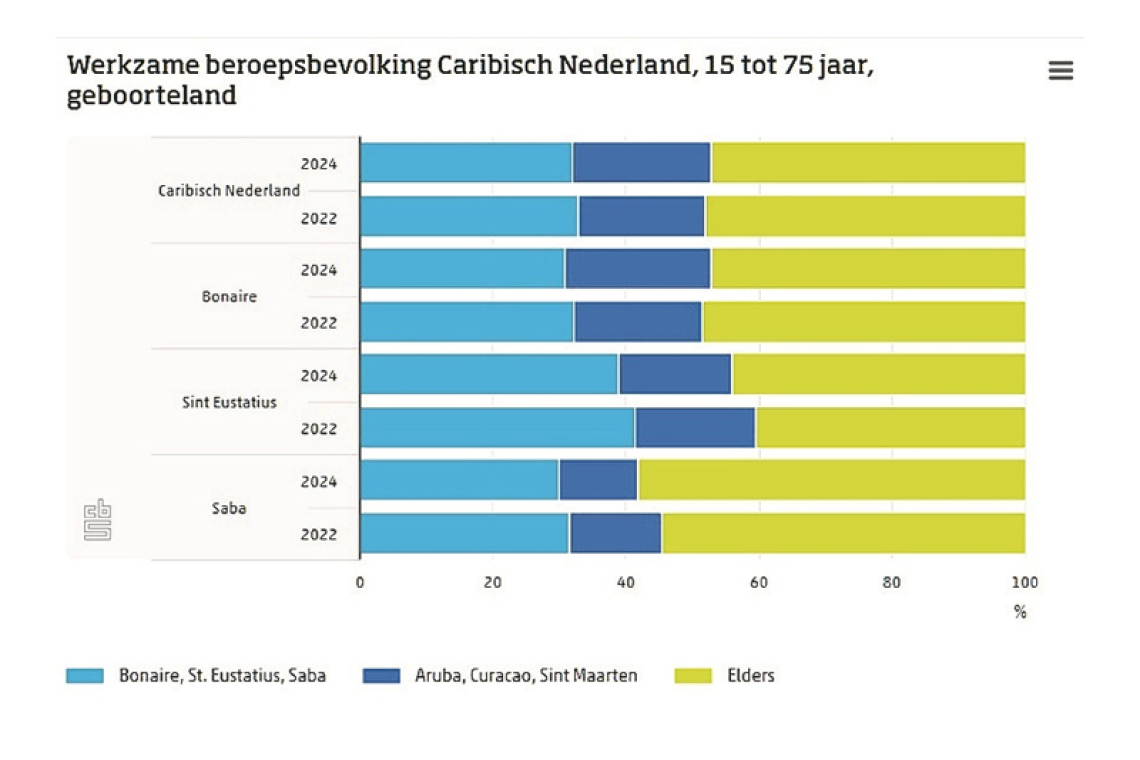KRALENDIJK--Employment across Bonaire and Saba saw significant growth in 2024, with the total number of working individuals ages 15 to 74 rising to 17,500 – a twelve per cent increase compared to 2022.
The growth was especially strong in Bonaire, while Saba registered a modest increase and St. Eustatius saw a slight decline. The figures come from the latest Labour Force Survey conducted by the Central Bureau of Statistics (CBS) in The Hague.
Bonaire added 1,800 jobs over the two-year period, bringing the total number of employed persons to 14,700 – a 14% increase. As a result, the island's net labour participation rate (the percentage of people ages 15 to 74 who are working) rose to 73.8% in 2024, up from 72.5% in 2022.
In contrast, employment in St. Eustatius declined by 3%, with 1,800 people in work in 2024 compared to the previous survey. The participation rate dropped from 72.9% to 71.4%.
Saba experienced a smaller but positive gain, with 1,100 people in employment – 90 more than in 2022. The labour participation rate rose to 67.2%.
From 2022 to 2024, employment among locally born residents – defined as those born on Bonaire, Saba, St. Eustatius, Aruba, Curaçao or St. Maarten – grew by 1,100, bringing the total to 9,300. However, the number of employed persons born outside these islands also increased, reaching 8,300 in 2024, up by 800 compared to 2022.
In Bonaire, 10,200 of the employed population in 2024 were not born on the island – an increase of 1,500 over two years. Roughly 20% of this group were born in Curaçao and 15% in the European Netherlands.
Bonaire-born residents made up around 30% of the island’s working population and were more likely to be employed in public administration, healthcare, construction and trade. Migrants were especially active in construction and hospitality.
Shifting demographics
In St. Eustatius, native-born workers made up 37% of the employed population in 2024, down from 40% in 2022. Most Statia-born workers were employed in government, education, and manufacturing. Notably, 14% of the employed population were born in the
Dominican Republic, a group largely working in construction.
Saba saw a similar trend. In 2024, 29% of employed persons were native Sabans, compared to 31% in 2022. Nearly half of them (45%) worked in public administration. The number of migrant workers rose to 780, up from 700 in 2022, with a noticeable presence of workers from Colombia and other countries. Migrants in Saba were mainly employed in construction, trade, hospitality and education.
Hiring of foreign nationals
According to labour regulations in the Caribbean Netherlands, employers must prioritise hiring local candidates or those with Dutch or United States nationality. Only when no suitable candidate is available can employers apply for a temporary work permit to hire individuals of other nationalities under strict conditions.







